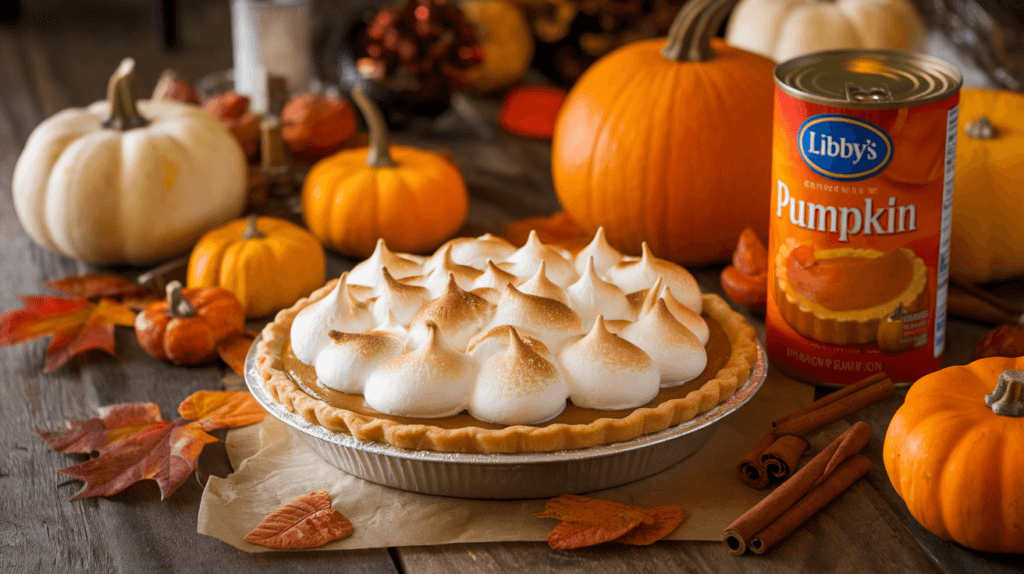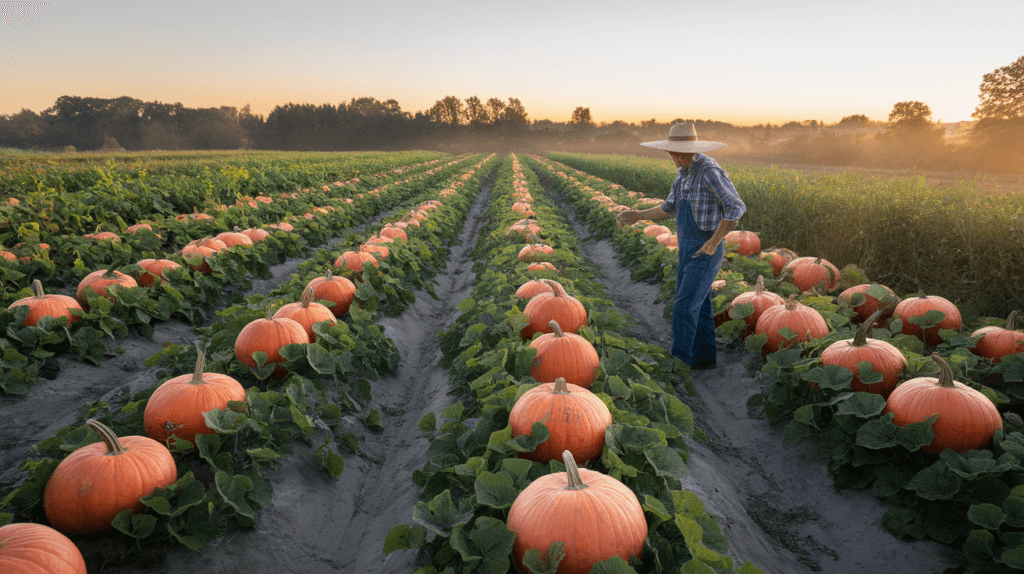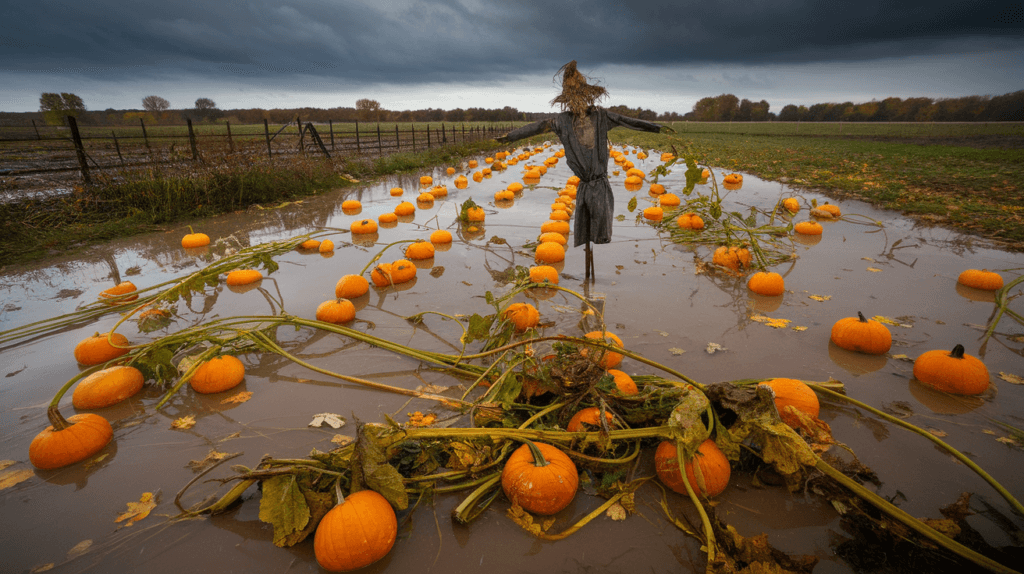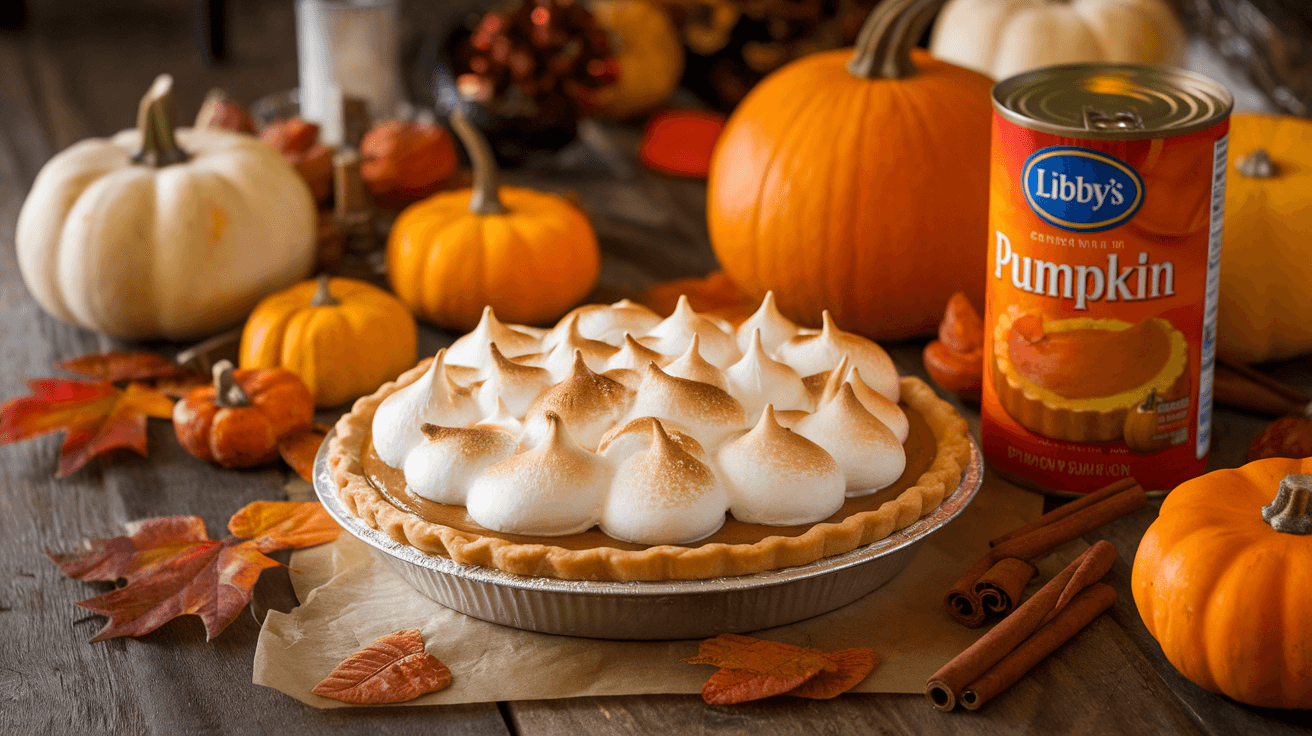Introduction

Libby’s pumpkin has long been a household staple, especially during the holiday season. Known for its exceptional quality and consistency, this brand of canned pumpkin is a favorite among bakers and chefs alike. However, in recent years, many consumers have noticed a significant increase in its price, sparking curiosity and concern. Why does Libby’s pumpkin carry such a premium price tag compared to other options on the market?
This article dives into the reasons behind the cost of Libby’s pumpkin. From specialized farming practices to market dynamics and consumer preferences, we’ll explore the factors contributing to its high price and why many people are still willing to pay for it. Whether you’re a fan of pumpkin pie or simply curious about pricing trends, this deep dive will offer valuable insights.
Why Libby’s Pumpkin Is So Popular and Expensive
History and Brand Reputation
Libby’s has been a trusted name in the canned pumpkin industry for over 90 years. The brand’s success began in the early 20th century when it introduced its canned pumpkin, quickly becoming synonymous with high-quality and consistent pumpkin products. Unlike competitors, Libby’s uses a proprietary variety of pumpkin known as the Dickinson pumpkin, which offers a rich, smooth texture and superior flavor. This unique commitment to quality has cemented Libby’s as the go-to choice for consumers during the fall and winter months.
Over the years, Libby’s has established a strong reputation as a reliable brand. Consumers praise Libby’s products for their versatility and flavor, using them in everything from pumpkin pies to soups and smoothies. This widespread admiration makes Libby’s a staple in kitchens nationwide.
Demand During Holidays and Cultural Significance
The demand for Libby’s pumpkin skyrockets during the holiday season, particularly in the weeks leading up to Thanksgiving and Christmas. Pumpkin pie, a quintessential holiday dessert in the United States, is a staple on many dinner tables, and Libby’s is the brand most associated with creating this traditional dish. Recipes often specify “Libby’s canned pumpkin,” which has created a loyal consumer base over decades.
American culinary culture deeply values Libby’s pumpkin. Families often pass down recipes that feature Libby’s pumpkin through generations, and online tutorials frequently recommend it as the top choice. Consumers’ emotional connection to the brand significantly increases its demand, especially during the holidays when traditions and cherished food memories dominate.
Why Libby’s Pumpkin Costs More: Key Factors Explained
Quality Standards and Farming Practices

Libby’s is renowned for its stringent quality standards, which significantly contribute to its higher price. Unlike generic brands, Libby’s cultivates its own proprietary variety of Dickinson pumpkin. These pumpkins are grown exclusively on specific farms, primarily located in Illinois, ensuring consistency in flavor, texture, and nutritional value. The controlled farming practices used by Libby’s help maintain its premium quality but also add to the production cost.
From planting to harvesting, the process of growing Libby’s pumpkin is meticulously monitored to ensure quality. These practices guarantee that Libby’s pumpkin meets the brand’s strict standards, but they limit the scalability of production, which keeps supply tight relative to demand. Furthermore, the pumpkins used in Libby’s pumpkin products are harvested at peak ripeness to achieve the desired taste and texture. This precise timing and labor-intensive process contribute to why Libby’s pumpkin is so expensive compared to other brands.
Specialized Production Techniques
The production process for Libby’s canned pumpkin is highly specialized. Once harvested, the pumpkins are immediately processed to lock in freshness and quality. The brand uses advanced equipment and techniques to transform whole pumpkins into a smooth puree without any fillers or additives. This level of processing ensures the product meets Libby’s high standards but results in higher operational costs.
Moreover, Libby’s employs a vertically integrated production system, meaning the company oversees every stage of production, from farm to can. While this approach ensures quality control, it requires significant investment in infrastructure and manpower, both of which contribute to the final cost of the product.
Processing and Manufacturing Costs
Manufacturing high-quality canned pumpkin is not a simple task. Libby’s operates its own canning facilities, where the pumpkins are processed and packed in compliance with food safety and quality assurance standards. These facilities require regular maintenance and upgrades to remain efficient and meet regulatory requirements.
The cost of steel for cans, packaging materials, and energy used in production has also risen in recent years, further impacting the price. Libby’s commitment to producing an additive-free, pure pumpkin puree also means they cannot cut corners by using less expensive ingredients or methods, maintaining their premium positioning in the market.
Transportation and Distribution Expenses
Transporting canned goods like Libby’s pumpkin involves significant logistical challenges. Rising fuel costs, labor shortages in the trucking industry, and supply chain disruptions have all contributed to higher transportation expenses. Since Libby’s is distributed nationwide and even internationally, these costs are inevitably passed on to the consumer.
Additionally, the weight of canned goods adds to shipping expenses. Libby’s careful packaging and distribution practices are designed to protect the product and maintain its quality during transit, but they also add to overall costs.
Seasonal Demand Spikes
One of the most significant factors driving the price of Libby’s pumpkin is its seasonal nature. While pumpkin is a year-round product, the majority of its sales occur between September and December, coinciding with fall recipes and holiday traditions. This surge in demand during a relatively short period leads to higher retail prices as suppliers and retailers capitalize on the seasonal popularity.
The limited growing season for pumpkins also plays a role. Farmers must harvest and store enough pumpkins to meet the seasonal demand, which adds complexity to inventory management and increases costs. Retailers may mark up prices further during peak periods to maximize profits.
Factors Contributing to Libby’s Pumpkin Pricing
Quality Standards and Farming Practices
One of the primary reasons for Libby’s premium price is its strict quality standards. Unlike many other brands, Libby’s uses a proprietary variety of pumpkin called the Dickinson pumpkin. These pumpkins are specifically bred to ensure a rich, creamy texture and robust flavor. The company manages its own farms and works closely with growers to maintain consistency and meet these high standards.
The farming process is meticulous. From planting to harvesting, Libby’s employs sustainable practices to produce the best pumpkins. However, this dedication to quality comes with higher operational costs, which inevitably impact the price of the final product.
Specialized Production Techniques
Libby’s doesn’t just grow pumpkins; it perfects them. The company processes its pumpkins in a way that retains their natural flavor and nutritional value while ensuring a long shelf life. This involves advanced techniques and proprietary processes that require significant investment in equipment and expertise. Additionally, Libby’s processes and cans its pumpkin within a short window after harvest, which requires precision and efficiency, further adding to costs.
Processing and Manufacturing Costs
The journey from farm to can involves multiple steps, each of which adds to the overall cost. Libby’s pumpkin undergoes rigorous cleaning, steaming, and pureeing before being canned. This process ensures the product meets the high standards expected by consumers but also increases the production costs. Furthermore, the rising cost of packaging materials like aluminum cans contributes to the higher retail price of Libby’s products.
Transportation and Distribution Expenses
Once the canned pumpkin is ready, it must be transported to retailers across the country. The transportation and distribution process is not immune to rising fuel costs and logistical challenges, which are common in the food industry. These factors directly impact the cost of delivering Libby’s pumpkin to shelves, contributing to its higher price.
Seasonal Demand Spikes
Demand for canned pumpkin is not consistent throughout the year. Libby’s experiences a sharp increase in demand during the fall and early winter months, coinciding with the holiday season. This seasonal surge places added pressure on the supply chain, often leading to temporary price increases. Retailers, too, may mark up prices during peak seasons to capitalize on the heightened demand, further driving up costs for consumers.
How Climate and Agriculture Affect Libby’s Pumpkin Prices
Weather Conditions and Crop Yields
Farming pumpkins is heavily influenced by weather conditions, which can significantly impact crop yields. The Dickinson pumpkins used by Libby’s are grown in carefully managed fields but remain vulnerable to unpredictable weather events like droughts, floods, or early frosts. When unfavorable conditions strike, they reduce the quantity and quality of the harvest, leading to supply shortages and, consequently, higher prices for consumers.
For instance, years with below-average rainfall can lead to smaller pumpkins or reduced yields, which significantly impacts Libby’s pumpkin production. When this happens, Libby’s must source fewer pumpkins at a higher cost per unit, directly driving up the cost of producing Libby’s pumpkin. These increased farming expenses are one of the key reasons why Libby’s pumpkin is so expensive compared to other canned pumpkin brands.
Soil Quality and Geographic Limitations
Libby’s pumpkins thrive in specific soil conditions, primarily found in select regions of the United States. The company cultivates its pumpkins in the fertile fields of Illinois, an area known for its optimal soil composition and climate for growing Dickinson pumpkins. However, this geographical limitation means Libby’s cannot easily expand its farming operations to other regions, restricting the supply and contributing to higher prices during periods of increased demand.
Maintaining soil health is another critical factor. Libby’s employs sustainable farming practices, such as crop rotation and organic soil enhancements, to preserve the quality of its fields. While these methods ensure superior pumpkin quality, they also require additional time and financial investment, which increases the overall cost of production.
Impact of Natural Disasters

Natural disasters, such as hurricanes, floods, and heatwaves, have a profound impact on agriculture, and pumpkin farming is no exception. For example, excessive rainfall can lead to waterlogged fields, making it difficult for pumpkins to grow properly, while heatwaves can stress crops, reducing their size and quality. When such events occur, they disrupt the supply chain, leading to shortages that inevitably raise prices.
Moreover, the increasing frequency of extreme weather events due to climate change has created an additional layer of uncertainty for Libby’s pumpkin farming operations. The need to mitigate these risks through advanced farming techniques and investments in resilience further drives up production costs.
The Role of Climate and Agriculture
Weather Conditions and Crop Yields
One of the key factors influencing the price of Libby’s pumpkin is the impact of weather on pumpkin farming. Pumpkins, like many crops, are highly sensitive to environmental conditions. Factors such as rainfall, temperature, and sunlight play a significant role in determining the quality and quantity of the harvest. A year with unfavorable weather can lead to reduced crop yields, driving up costs due to limited supply.
For example, excessive rainfall can lead to waterlogged fields, making it difficult to harvest pumpkins. On the other hand, prolonged droughts can stunt growth and reduce the size of the pumpkins. These climate challenges are increasingly unpredictable, leading to fluctuations in production costs and, subsequently, retail prices.
Soil Quality and Geographic Limitations
Libby’s pumpkin is made using proprietary Dickinson pumpkins, grown in select regions with ideal soil and climate conditions. However, maintaining these conditions to produce Libby’s pumpkin requires careful management and significant investment. To ensure quality, soil health is preserved through crop rotation, fertilization, and other sustainable farming practices. These efforts, while crucial for maintaining the standards of Libby’s pumpkin, add significantly to its production costs, which is one reason why Libby’s pumpkin is so expensive.
Additionally, Libby’s farming operations are geographically limited, as Dickinson pumpkins thrive only in specific climates. This lack of scalability means that production cannot be easily increased to meet rising demand, further contributing to higher prices.
Impact of Natural Disasters
Natural disasters such as floods, hurricanes, or unexpected frost can devastate the pumpkin crops used to make Libby’s pumpkin. In recent years, climate change has led to more frequent and severe weather events, making it harder to predict and manage agricultural yields for Libby’s pumpkin production. When disaster strikes, the loss of crops creates scarcity, which significantly impacts the price of Libby’s pumpkin at both the wholesale and retail levels. These challenges are a key factor in why Libby’s pumpkin is so expensive.
For instance, if Libby’s experiences a poor harvest due to extreme weather conditions, it not only faces increased production costs but also struggles to meet consumer demand. This scarcity often results in price hikes as retailers adjust to the limited supply.
FAQs About Why Libby’s Pumpkin Is So Expensive
1. Why is Libby’s pumpkin more expensive than other brands?
Libby’s uses a proprietary variety of pumpkin (Dickinson pumpkin), employs high-quality farming practices, and invests in specialized production techniques. These factors, combined with seasonal demand and supply chain challenges, contribute to its premium pricing.
2. Does the quality of Libby’s pumpkin justify its higher price?
Yes, Libby’s is known for its consistent texture, flavor, and quality. Many consumers prefer it because it provides superior results in recipes, particularly for holiday dishes like pumpkin pie.
3. Are there alternatives to Libby’s pumpkin?
Yes, there are other brands of canned pumpkin, but they may not offer the same quality and consistency as Libby’s. Some consumers opt for store-brand options or fresh pumpkins as budget-friendly alternatives.
4. How can I save money on Libby’s pumpkin?
You can look for discounts and coupons, buy in bulk during off-peak seasons, or shop at retailers that offer competitive pricing. Stocking up before the holiday season can also help you save.
5. Is Libby’s pumpkin worth the cost for holiday baking?
For many people, the quality and consistency of Libby’s pumpkin are worth the extra cost, especially for special occasions like Thanksgiving and Christmas, where taste and texture matter most.
6. Will Libby’s pumpkin prices go down in the future?
While prices may fluctuate, factors like inflation, rising production costs, and climate challenges suggest that Libby’s pumpkin is likely to remain a premium product. However, increased efficiency and sustainable practices could potentially stabilize prices over time.
Conclusion
Libby’s pumpkin has earned its reputation as a premium product through decades of dedication to quality and consistency. While the higher price tag may be a concern for some consumers, the reasons behind it—specialized farming, stringent quality control, and seasonal demand—justify its cost. From its cultural significance during the holidays to its unmatched reliability in recipes, Libby’s continues to be a top choice for pumpkin enthusiasts.
For those looking to save money, strategies like shopping during sales, exploring alternative brands, or using fresh pumpkins can help. However, for many, the superior quality and flavor of Libby’s pumpkin make it worth every penny, particularly for creating cherished holiday dishes. As market conditions evolve, Libby’s remains a shining example of how quality products maintain their value despite challenges.

